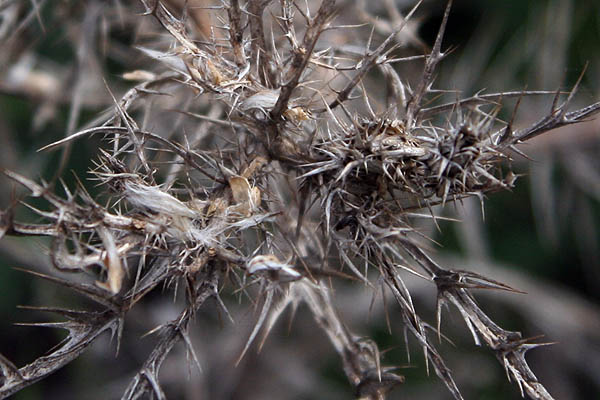Black chamoeleon,
Hebrew: נעצוצית סבוכה, Arabic: كردوبتيوم عذقي
| Scientific name: | Cardopatium corymbosum (L.) Pers. | |
| Synonym name: | Echinops corymbosus L. | |
| Common name: | Black chamoeleon | |
| Hebrew name: | נעצוצית סבוכה | |
| Arabic name: | كردوبتيوم عذقي | |
| Plant Family: | Compositae / Asteraceae, מורכבים |

Location: Bene Zion Nature Reserve |
| Life form: | Hemicryptophyte | |
| Spinescence: | Leaves, bracts | |
| Stems: | 8-20 cm high, with short stems, often prostrate, with thorns up to 1 cm long. | |
| Leaves: | Basal leaves in wide rosette, alternate, dissected twice or more, spinescent | |
| Flowers: | Dark blue flower heads with pinnate spiny leaves | |
| Fruits / pods: | Hairy achene | |
| Flowering Period: | July, August, September | |
| Habitat: | Batha, Phrygana | |
| Distribution: | Mediterranean Woodlands and Shrublands, Semi-steppe shrublands | |
| Chorotype: | Mediterranean | |
| Summer shedding: | Ephemeral |

Location: Bene Zion Nature Reserve Derivation of the botanical name: corymbosum, corymbus, κορυμβοϛ, cluster of fruit or flowers; osus, plenitude or notable development; full of corymbs.
|